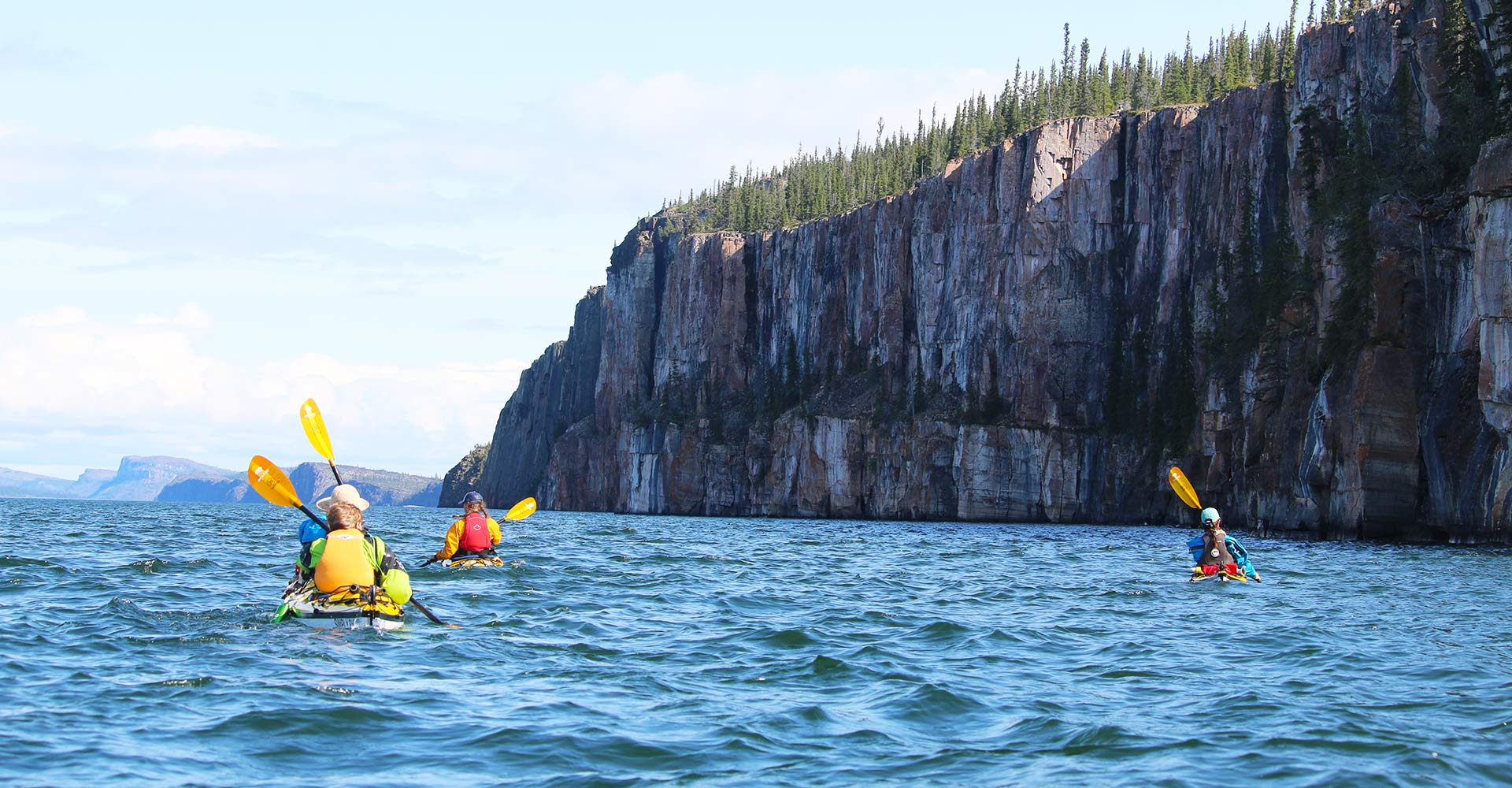
Learn about why Great Slave Lake is a spectacular and remote destination. Written by an expert wilderness guide, this blog will be helpful for those planning a trip to Great Slave Lake, or who are keen to learn more about the deepest lake in North America.
Guide to Paddling Great Slave Lake
Planning a Paddling Trip to Great Slave Lake
Great Slave Lake Canoe & Kayak Expeditions by Jackpine Paddle
Out of the thousands of lakes in the Northwest Territories, Great Slave Lake is truly one of the greatest!
It offers opportunities for paddling, hiking, and fishing in not only one of the largest, but the most remote lakes in Canada.
If you have a thirst for wilderness adventure, consider a trip of a lifetime to Great Slave Lake.
Great Slave Lake, situated in the Northwest Territories of Canada, is on a scale that is awe-inspiring.
As the second largest lake (by surface area) that lies entirely within Canadian borders, it ranks as the fifth largest in North America and the tenth largest in the world. Its sheer size and breathtaking beauty make it an ideal destination for outdoor adventurers.
Great Slave Lake features two notable arms known as the North and East arms that extend out from the main body of the lake.
Canada’s newest National Park: Thaidene Nene (“the land of our ancestors”) was formed in 2019 in the East Arm.

From a paddler’s perspective, the North Arm is a paradise of unexplored islands of glacier carved, Precambrian rock.
The numerous channels and bays of the North Arm are important habitat for breeding birds, and each year attract more than 100,000 northbound migrating waterbirds.
This vast wilderness, which is home to Canada’s newest park Thaidene Nene, offers a breathtaking landscape that is ripe for exploration.
With its rugged terrain and pristine waters, the East Arm is the perfect playground for hikers, paddlers, and anyone who loves to immerse themselves in the great outdoors.
From the dramatic cliffs that line the shoreline, to the hidden waterfalls and remote islands, there is no shortage of natural wonders to discover.
Whether you’re interested in hiking through rugged terrain, paddling along pristine waters, or simply taking in the stunning natural beauty, the East Arm of Great Slave Lake offers endless opportunities for adventure and discovery.
Perhaps the most iconic feature of the East Arm are the towering cliffs that were formed by the Macdonald Fault.
These majestic formations highlighted around Etthen and Red Cliff Island, are so impressive that they can even be seen from outer space, and are a testament to the raw power of nature.
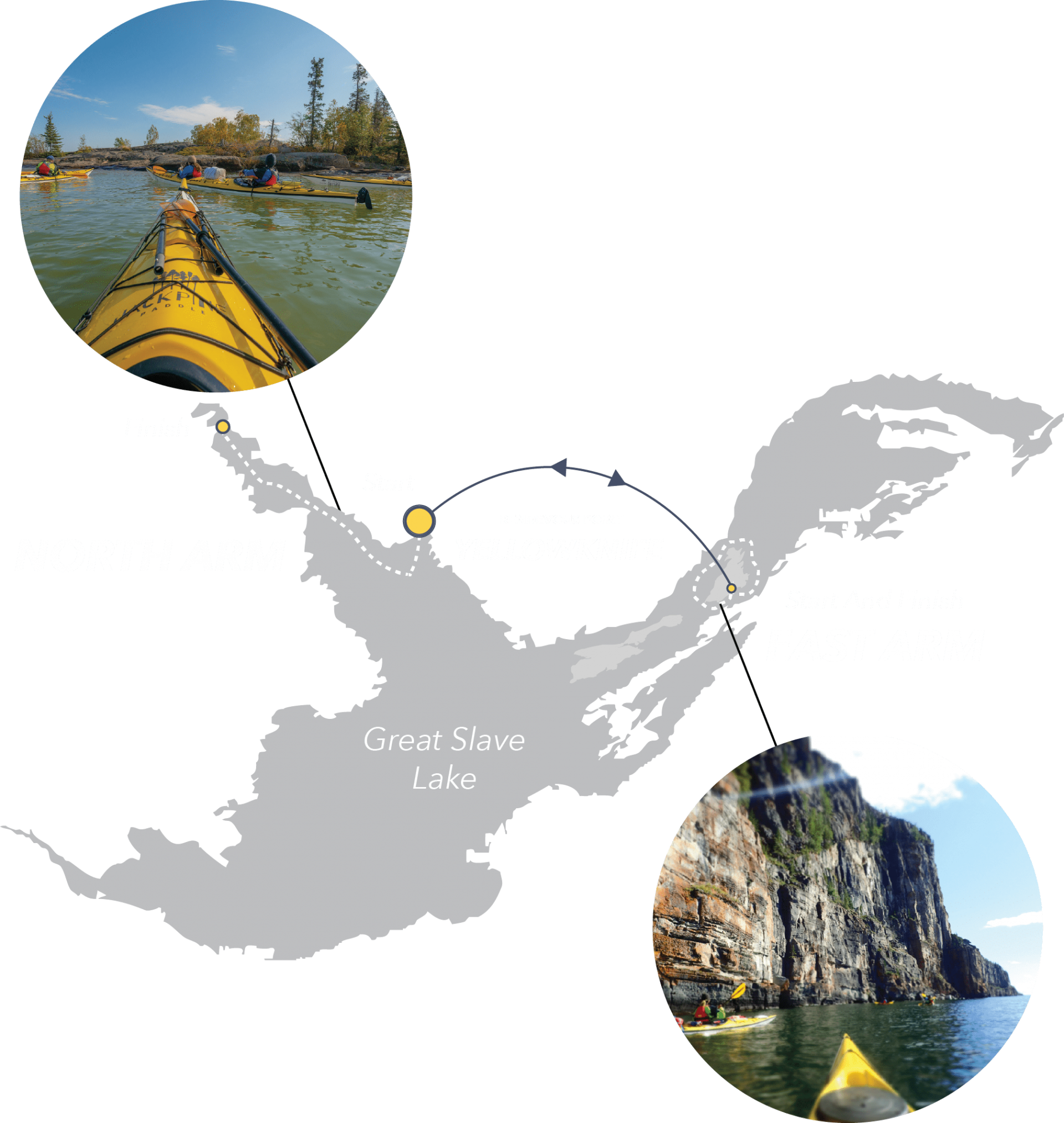
Great Slave Lake, situated in the southern region of the Northwest Territories, is not only Canada’s second-largest lake but also one of the deepest in the world. With a maximum depth of more than 615 metres, it surpasses even North America’s deepest lake, Crater Lake, and is deep enough to submerge the CN Tower in Toronto.
In addition to its impressive depth, Great Slave Lake also boasts a massive surface area of 28,568 square kilometres, making it the tenth largest lake in the world and second largest entirely within Canada after Great Bear Lake, also located in the Northwest Territories.
To put this size into perspective, Great Slave Lake is roughly equivalent in area to the entire country of Belgium.
For many years, the indigenous and Métis people have called the regions surrounding Great Slave Lake their home.
There are several distinct communities that border Great Slave Lake, home to their own traditions and languages, with different names for the “Big Lake” across these various histories.
The term “Slave” is considered by some colonial and imposed, and not particularly dear to northerners, both indigenous and non-indigenous.
If you’re a fan of the survivalist reality show “Alone,” then you may have already seen the show’s sixth and seventh seasons that were filmed along the East Arm of Great Slave Lake.
The show’s premise involves dropping ten individuals into an extreme wilderness setting armed with minimal equipment and cameras to document their efforts to survive. The East Arm of Great Slave Lake, provided a perfect backdrop for the show’s intense challenges – set during the cold winter months.
The vast hinterland surrounding Great Slave Lake has a sparse population, and few roads. It is a true wilderness area offering something for almost every outdoor adventurer.
Great Lake Lake offers some of the most remote, but accessible paddling in the Northwest Territories, often by canoe, kayak, or stand-up paddleboard. Paddlers chose to explore Yellowknife Bay, the North Arm, or venture deeper away from civilization towards the East Arm and Thaidene Nene National Park.
Great Slave Lake is known for its world-class fishing. Trophy-sized lake trout (up to 60 lbs!), northern pike, and arctic grayling can be caught. The East Arm is known for lake trout and arctic grayling, where the shallower waters of the North Arm are most suitable for northern pike.
You’ll find some excellent fishing lodges on Great Slave Lake such as Trophy Lodge and indigenous-owned Frontier Lodge in the East Arm, and Trout Rock Lodge in the North Arm.
The protected wetlands of the North Arm offer a stunning variety of birds, such as bald eagles, gulls, terns, ducks, swans and geese – especially during the spring and fall migration.
While moose & black bears roam all around the lake, muskoxen are now growing in population in some areas of the East Arm, particularly around the community of Lutsel K’e and in Thaidene Nene National Park.
You won’t have to worry about booking ahead or competing for campsites on Great Slave Lake! But as a true wilderness area, there are no amenities and most areas are accessed by boat shuttle or air charter float plane.
The Territorial Government is opening a new road-accessible campground in 2023 – located at the North Arm Territorial Park. Once completed, this will be the first typical, serviced campground anywhere along the 1,700 km shoreline of Great Slave Lake.
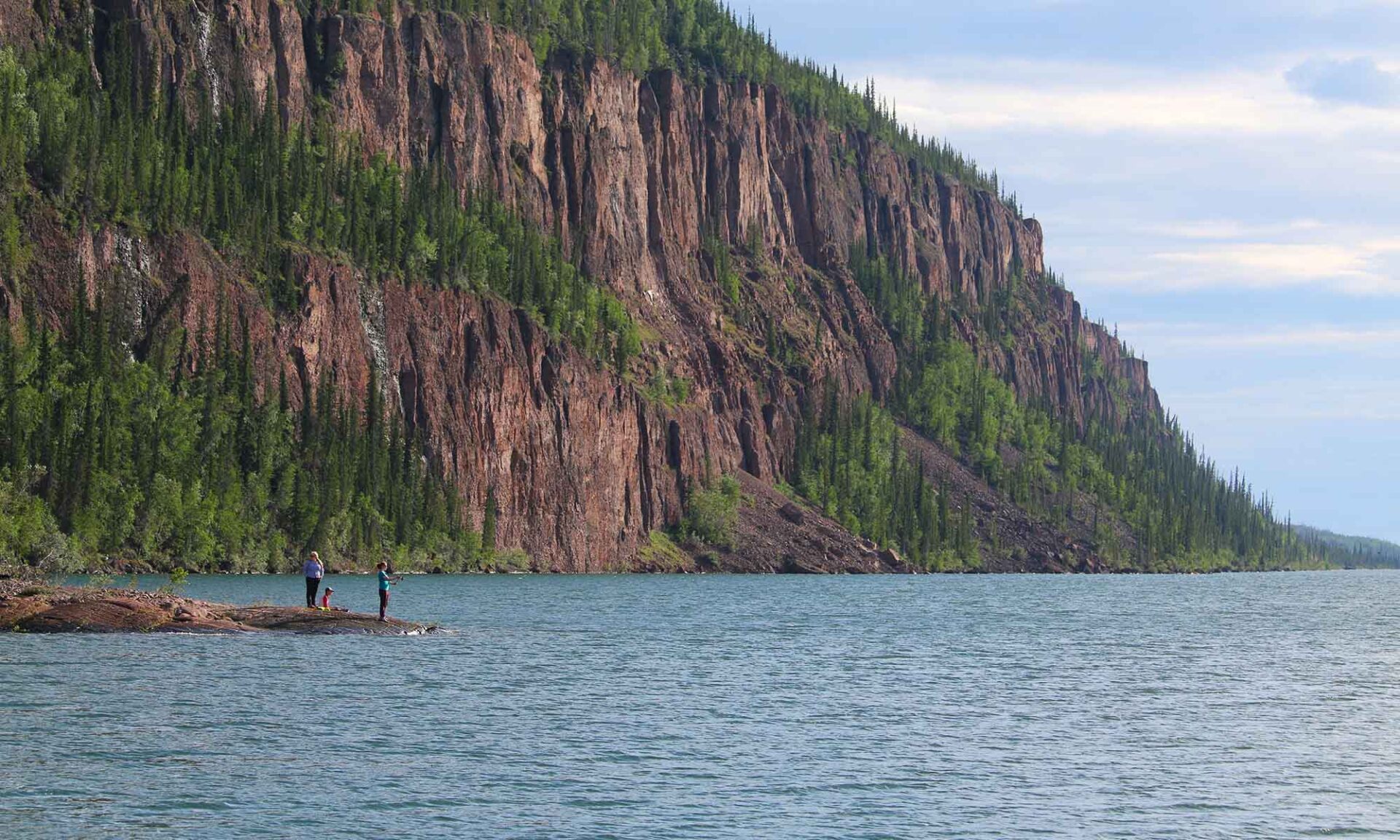
Great Slave Lake is a paddler’s paradise, offering a range of routes suitable for beginners and experienced paddlers alike. With so much to explore, it’s possible to spend multiple summers discovering new areas of this vast lake.
One important factor to consider when planning a paddling trip is the wind, which can vary depending on the topography of the area. The North Arm of the lake, for example, is home to numerous islands that provide shelter from the wind. On the other hand, the south shore is more exposed, with limited camping options, and is not as commonly frequented by paddlers.
The East Arm of the lake, which boasts several large islands like Etthen, Blanchet, Caribou, and the Simpson Islands. A circumnavigation of one of these islands or island areas could easily fill a one to two-week trip.
No matter where you decide to paddle on Great Slave Lake, it’s important to use caution and read local weather, especially when attempting extended crossings. With an on-shore wind and enough fetch, there are many parts of the lake where paddlers can be exposed to swell conditions or 3-6 foot waves in strong winds.
Located in the sub-arctic, Great Slave Lake is a northern lake and the water is cold!
For multi-day paddling trips we recommend thermal protection in wetsuits or drysuits for paddlers – especially those venturing far out from towns and on self-guided trips.
If you are canoeing on an extended trip on the North Arm or East Arm, you should consider rigging your canoe with a spray deck.
If you are new to paddling, consider a canoe or kayak course, or a 3-5 day guided canoe trip on Great Slave Lake.
Due to it’s size and remoteness, we recommend renting expedition-grade gear for multi-day paddling trips on Great Slave Lake. You can learn more about our rates and options on our Canoe and Kayak Rentals Page.
For those looking to explore the East Arm of Great Slave Lake on a self-guided trip, we have canoes avaliable for rent in Lutsel K’e at Frontier Lodge. As this equipment is already staged at the gateway to Thaidene Nene National Park, it could help you save significant $$$ on your boat/air charter booking, or be accessed using less expensive scheduled flights via Air Tindi from Yellowknife to Lutsel K’e.
If you are looking for day rentals, check out Sundog Adventures who are located steps away from the water on Yellowknife Bay.


Yellowknife is the most convenient hub to access Great Slave Lake.
Yellowknife is served with daily flights from southern hubs with Air Canada, Westjet, Canadian North & Air North. Direct flights are available most regularly from Edmonton & Calgary, with Air Canada offering direct Vancouver-Yellowknife flights during the summer.
During certain days of the week, Air North has direct flights to Yellowknife from Ottawa, Toronto, & Whitehorse.
Or you can drive! There is a paved highway all the way to Yellowknife, if you have the time for a long road trip.
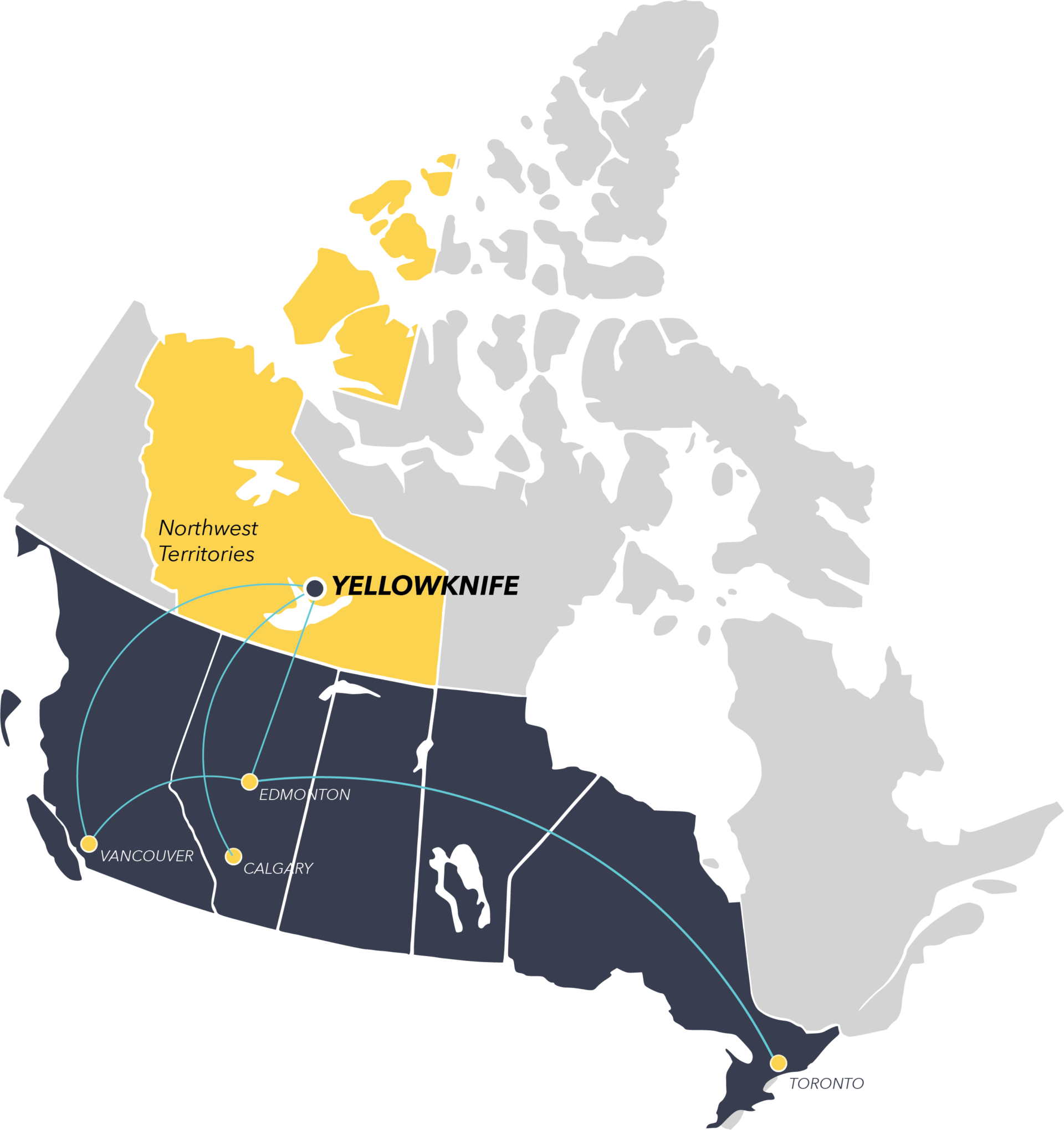
We do recommend staying either downtown or in Old-Town, to ensure you’ll be within walking distance of most restaurants, bars and
attractions.
We can recommend the Explorer Hotel & Nova Hotels, and can offer discounted hotel rates for guests on our guided canoe and kayak trips, or those renting gear from us for multi-day self-guided trips.
The paddling season on Great Slave Lake is short. In most summers, the North Arm is free of ice by mid-June, and the East Arm has melted by early July.
The best weather is from mid-June to mid-August. If you are looking for northern lights, consider booking a trip from mid-August to mid-September to take advantage of the fall aurora season.
Logistics can be difficult to access remote areas on Great Slave Lake. For self-guided trips, we can offer shuttles on the North Arm. To get yourself to the East Arm, you can reach out to Ahmic Air or Air Tindi for an air charter quote.
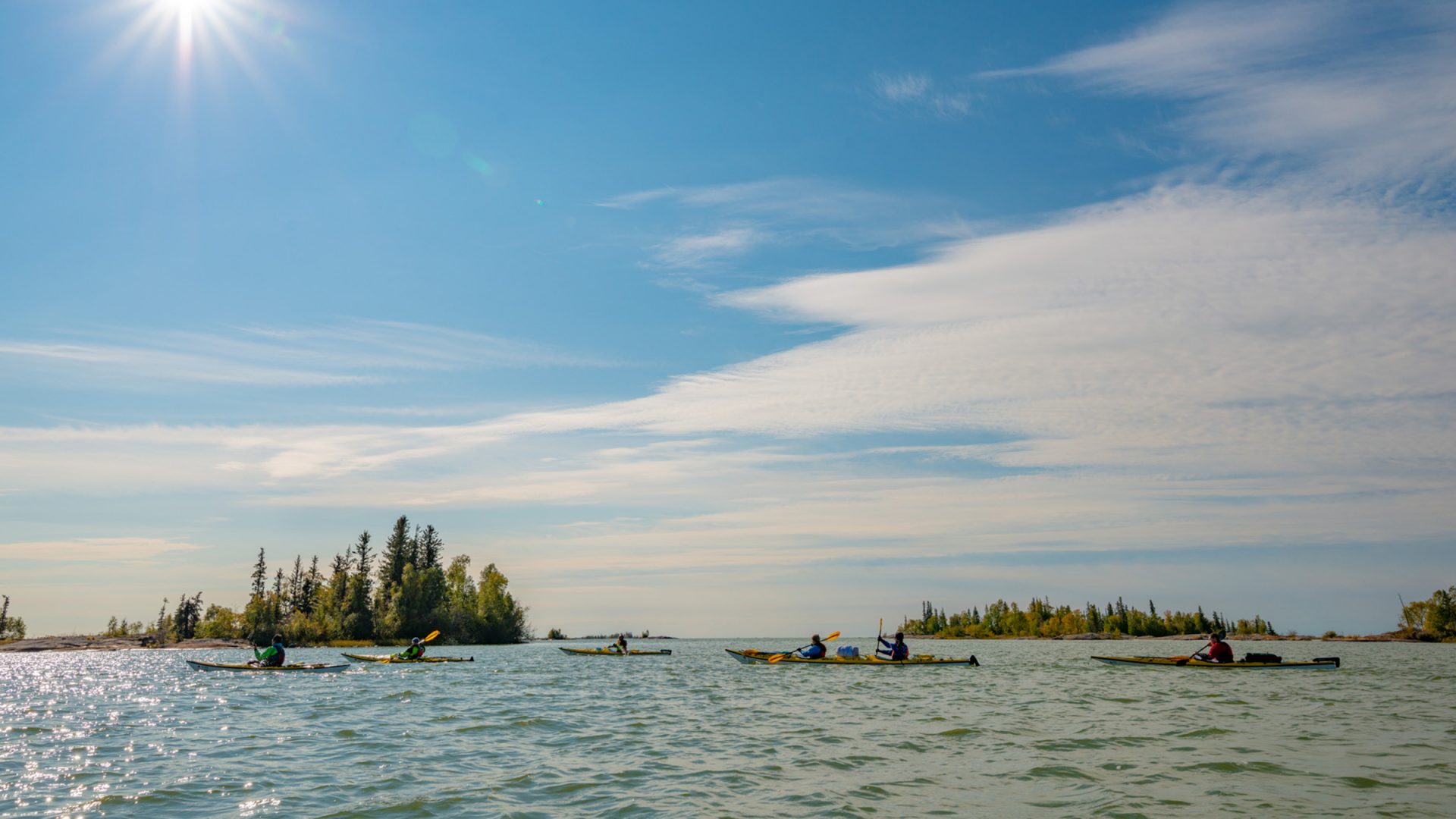
We offer guided 3-5 day canoe trips on Great Slave Lake, as well as guided 7-9 day kayak expeditions on the North Arm and East Arm.
For rentals, you can learn more about our rates and options on our Canoe and Kayak Rentals Page.
Our iconic wilderness trips are a dream-job for most paddling professionals, so we pick carefully from the best.
You’ll join elite, northern guides trained to the highest standards in the industry. Some of whom have honed their arctic experience over more than 100 expeditions in their 20-plus-year career.
Check out this blog to read our list of Top 7 “Must Have gear” for a canoe or kayak trip in the Northwest Territories – from Lead Guide Dan Wong.
Or read a trip report from the East Arm, in the words of kayak guide Michael Herman.